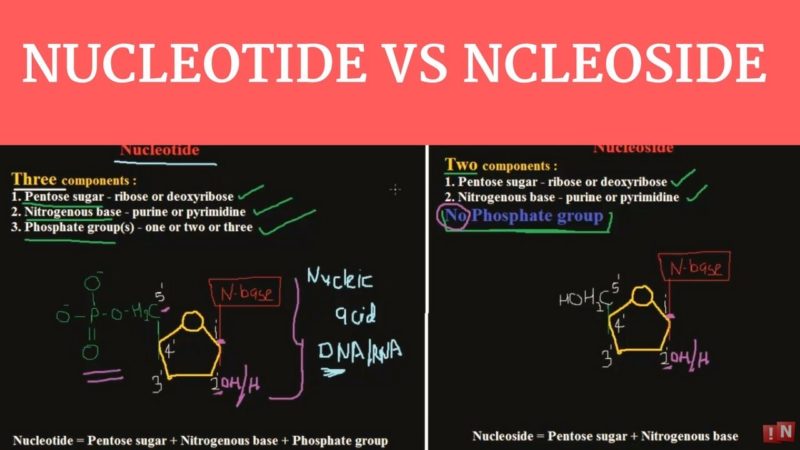What is the difference between nucleoside and nucleotide?
Both nucleoside and nucleotide are commonly used terms since they are the building block of nucleic acid. The two terms tend to confuse many students pursuing a science course.
The article provides detailed insight into the core difference between nucleoside and nucleotide with an example for easier understanding. Let’s find out:

What Is A Nucleoside?
A nucleoside is a compound made up of a nitrogenous base and pentose sugar. It is simply a nucleotide that does not have a phosphate group.
Examples of nucleoside are Adenosine, thymidine, uridine, guanosine, cytidine and inosine. The nitrogenous base is bound to three positions of pentose sugar through a beta-glycosidic bond.
The analogous of the nucleoside is used for antiviral and anticancer agents. It is recommended to have a diet full of nucleoside for better health.
What Is A Nucleotide?
A nucleotide is a compound that has a nitrogenous base and a phosphate group attached to pentose sugar as either ribose or a deoxyribose.
About one to three phosphate groups tend to be anchored to five positions of pentose sugar carbon. Examples of nucleotide are Adenine, Guanine, Cytosine, and Thymine.
The polymerization of nucleotide results in the formation of DNA and RNA. They are formed by removing the diphosphate to link the 5′ phosphate group of the first nucleotide with the 3′ OH group of the second nucleotide through a phosphodiester bond.
Comparison Chart: Nucleoside vs Nucleotide
| Basic Terms | Nucleoside | Nucleotide |
| Chemical composition | Sugar and a nitrogenous base | Sugar, a nitrogenous base and a phosphate group |
| Uses in Medicine | Creation of antiviral and anticancer agents | Malfunction causes cancer |
| Examples | Cytidine, Uridine, Adenosine, Guanosine, Thymidine, and Inosine. | Adenine, Guanine, Cytosine, and Thymine. |
| Correspondence | Precursor of nucleotide | The precursor of polynucleotides, DNA, and RNA. |
| Importance | For optimal health. | Used in signal transduction pathways, sequencing, and as an energy source. |
Core Difference between Nucleoside and Nucleotide
Here are some of the core differences between nucleoside and nucleotide in points. They include:
- The nucleoside analogs are used as antiviral and anticancer while malfunction of nucleotides results in cancer.
- Examples of nucleotides are 5′-Cytidine monophosphate, 5′-Uridine monophosphate, and 5′-Thymidine monophosphate while examples of nucleosides are Cytidine, Uridine, and Adenosine.
- Nucleoside undergoes phosphorylation to form nucleotides whereas nucleotides tend to form covalent bonds with other nucleotides to form the nucleic acid strand.
- The chemical composition of the nucleoside is pentose sugar and nitrogenous base while that of nucleotide is pentose sugar, a nitrogenous base, and a phosphate group.
You May Also Like:
- Difference between DNA and RNA
- Difference between Necrosis and Apoptosis
- Difference between Prokaryotic and Eukaryotic DNA
- Difference between Prokaryotic and Eukaryotic Chromosomes
- Difference between Single-Stranded DNA and Double-Stranded DNA
Comparison Video
Summary
The core difference between nucleoside and nucleotide is the presence of the phosphate group. However, these nucleic acids are quite important in the body of living organisms.
More Sources and References
- Nucleoside and Nucleotide. Vedantu.
- Nucleoside. Wikipedia